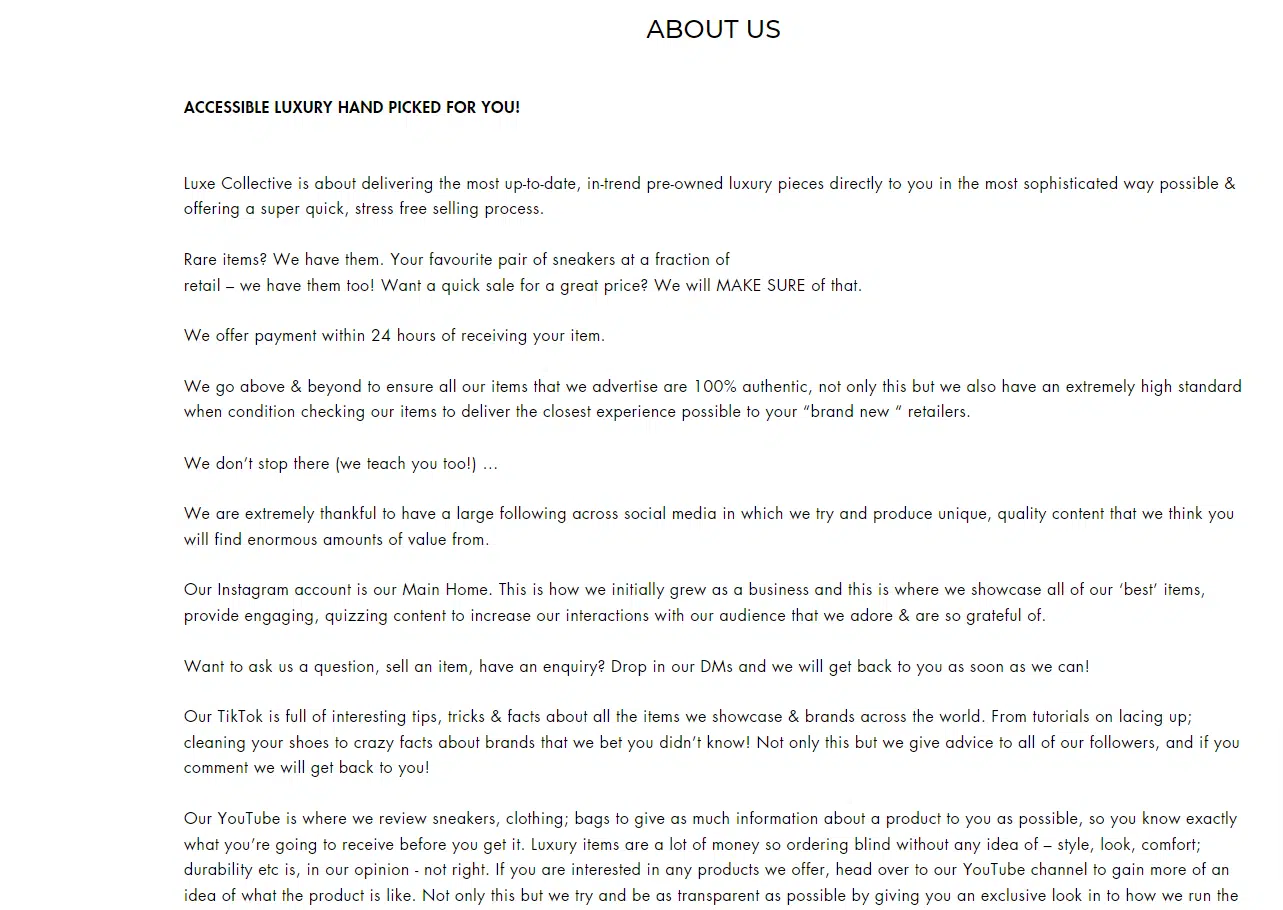Online shoppers want to buy from real experts. When searching for products or services, they look for sites with genuine experience, expertise, authoritativeness and trustworthiness (known as E-E-A-T).
To earn user trust, ecommerce brands must move out of the shadows and focus on building strong E-E-A-T signals, both on-site and off-site. Here’s why and how.
The value of E-E-A-T beyond SEO
As an online shopper, there is nothing more frustrating than seeking expert insight or experience-based advice on products or services – only to be provided with neither.
I want to read a review from a real person who has used the item I am about to buy or who has stayed in the hotel I am about to book – one with specific details and real-life photos (or in internet parlance, receipts).
I don’t want to be persuaded by an anonymous expert that this is the best way to invest my money or time.
This is why user-generated content (UGC) has become so valuable. It looks and feels authentic to people.
It’s why journalists on the most authoritative news sites have bylines, often with a photo, and even their own personal brands that have been cultivated with social posts and podcast appearances.
On a web rife with disinformation, I am far more likely to trust the words of a journalist with proven expertise and experience in their chosen beat, especially when it comes to topics such as finance and politics.
These days, consumers often exhibit the same due diligence when shopping. They want to buy skincare recommended by someone who knows what they’re talking about, not someone who has just been paid to share a #ad post on behalf of a skincare brand, and rightly so.
This tends to apply across the web. When there is so much content, you only want to spend time or money on the really helpful stuff.
For example, when it comes to travel blogs, I want the opinions of someone who has traveled to Rome and tried the cacio e pepe they are recommending before I’ll read their blog about it and click on an affiliate link to book a trip.
Dig deeper: Ecommerce content: How to demonstrate beneficial purpose and expertise
What ecommerce can learn from George Foreman
In 1994, four years before Google was founded, the world was awash with television advertisements fronted by the former boxer George Foreman.
Foreman, the original influencer, was selling the Lean Mean Fat-Reducing Grilling Machine, a type of countertop grill that could apparently reduce the content of the average mixed grill. At the end of the ad he would turn to the camera and deliver his catchphrase, “It’s so good I put my name on it!”
This appeal to consumer trust clearly worked. By the end of the 1990s, it seemed like everyone had a Foreman grill in their kitchen. The grill went on to sell over 100 million units.
Suppose you’re writing content online to sell something directly or otherwise. In that case, you should be willing to put your name, face and brand into that content, like journalists using their byline to instill trust in their reportage and Foreman using his name to instill trust in his low-fat grill.
The best and most trusted content creators have created a personal brand as experts in their chosen niche, building trust with those who consume their content and come to them for their expertise.
It is what we expect from journalists, TikTok creators and also websites. If a website is full of content created by anonymous, nameless and faceless authors, it’s a pretty big red flag to consumers, and Google knows that this is not the content they are looking for.
Beware of the B.S. bio
You can’t build trust and authority overnight with a hastily optimized author page and blank LinkedIn profile. Nothing about the below example, shared by Lily Ray on X, implies any real expertise or experience.

A great example of an ecommerce site implementing E-E-A-T is Freddie Chatt’s The Village Cricket Co.
You’ll first notice a picture of Chatt in his cricket whites. He doesn’t go on to claim to be a cricket expert – quite the contrary.
His bio on the site makes clear he is a passionate amateur and a lover of the game. It’s also full of references and inside jokes that will demonstrate to readers and fellow cricket fans that he is part of an in-group of genuine cricket enthusiasts.


This is a far better approach than pretending to be something he isn’t.
You don’t have to be an expert in the game. Relevant experience is enough as long as you’re transparent about it.
The most important thing about this is how clearly it demonstrates he is a real human who genuinely cares about cricket.
If I knew what a wicket was, I’m fairly certain that this is the type of website I would choose to buy my cricket bats from.
The lesson here is not to go and create a persona, complete with a page-long fictitious bio and a Midjourney-generated photo.
It really doesn’t matter how elaborate a bio you write – or prompt ChatGPT to write – if the person behind it doesn’t exist.
This is one of the most worrying quick fixes to E-E-A-T. Combining this technique with digital PR raises some severe ethical concerns. I have written about this issue in “Why using AI to create YMYL experts is a REALLY bad idea.”
Step out of the shadows
Much like consumers, Google prefers to deal with real brands rather than anonymous sites, especially ones led by humans with names and faces and real-life experience and expertise.
So build a brand you are proud of around a topic you know (and/or love), and don’t be afraid to shout about it on- and off-site.
The best brands share content across social. Some ecommerce sites have focused on building their off-page trust signals with their social accounts more aggressively than on-page ones.
Luxury goods reseller’s Luxe Collective has a pretty simple About us page, but it signposts you to their social pages where they demonstrate their E-E-A-T.
They refer to Instagram as “their main home” and also point toward their TikTok, where they demonstrate just how well they know and understand their short-form videos to their 1.5 million followers.
This is what has made them the go-to in pre-loved luxury.


If “social at scale” feels beyond your reach, invest in some digital PR, which (aside from the links) will help you build brand recognition and let your authors build off-site expertise and trust signals.
Moving on from faceless ecommerce
Shopping online is ubiquitous, and helping ecommerce sites reach their consumers (despite what a certain Verge article might have you believe) isn’t ruining the internet.
But we all want to spend our money on websites we can trust, from people who are invested in what they are selling and not ashamed to put their name and face to it.
Most importantly, while a brand is important, people buy from people. That is – real people with genuine human opinions, not from the AI-generated author profiles of pseudo-people.
Dig deeper: Ecommerce marketing next year: 5 ways to set up for success
Opinions expressed in this article are those of the guest author and not necessarily Search Engine Land. Staff authors are listed here.








